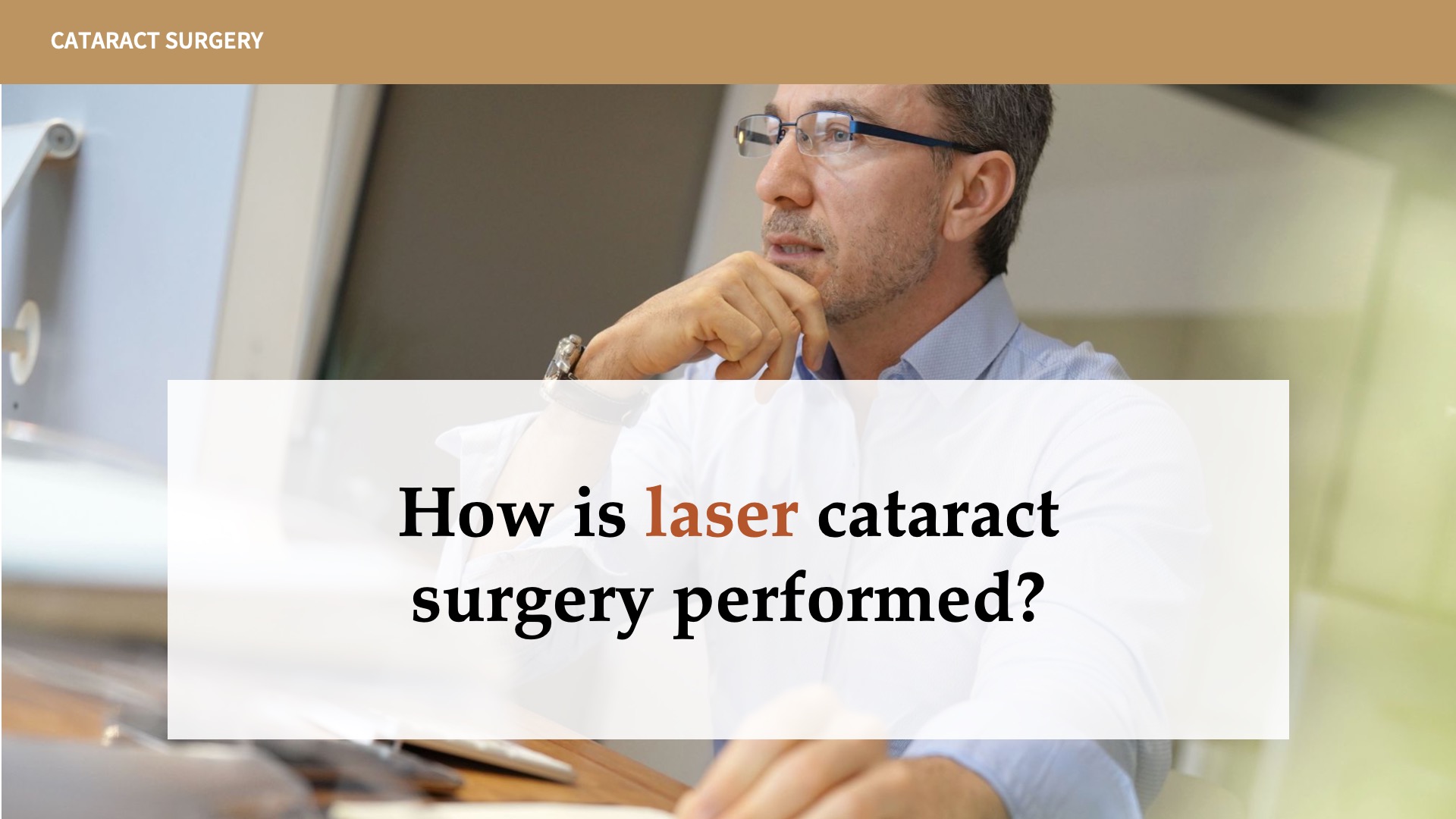Dr Matthew Russell discusses how laser cataract surgery is performed
Laser cataract surgery — also called Refractive Laser-Assisted Cataract Surgery (ReLACS) — is an advanced type of cataract surgery. It uses femtosecond laser technology to bring a new level of precision and accuracy to specific steps in cataract surgery traditionally performed with hand-held surgical tools.
Step 1
The first step in cataract surgery is making an incision in the cornea.
Optical coherence tomography helps us to plan the location and depth of incisions made during laser-assisted cataract procedures. OCT scans offer high-resolution and cross-sectional images to make cataract surgery as precise as possible.
In standard cataract surgery, surgeons use a hand-held instrument with a blade to create an incision in the area where the cornea meets the sclera. This incision allows the surgeon to gain access to the interior of the eye to break up and remove the cataract.
Next, we implant an intraocular lens (IOL) to replace the cloudy natural lens.
In laser cataract surgery, we create a precise surgical plan for the corneal incision with a sophisticated 3-D image of the eye called an OCT (optical coherence tomography).
The goal is to create an incision with a specific location, depth, and length in all planes. The OCT image and a femtosecond laser can perform the surgery exactly without the variable of surgeon experience. This is important not only for accuracy but also for increasing the likelihood that the incision will be self-sealing at the end of the procedure, which reduces the risk of infection.
Step 2
The next step is called an anterior capsulotomy. A very thin, clear capsule surrounds the eye’s natural lens. In cataract surgery, we remove the capsule’s front portion. This enables the surgeon to gain direct access to the cloudy lens. The remainder of the lens capsule that remains intact in the eye holds the artificial lens implant in place for the rest of the patient’s life.
In traditional cataract surgery, the surgeon opens the capsule with a small needle and then uses that same needle or forceps to tear the capsule in a circular fashion.
In laser cataract surgery, we perform the anterior capsulotomy with a femtosecond laser like the type used in LASIK vision correction surgery. Studies have shown that capsulotomies performed with a laser have greater accuracy and reproducibility.
Studies also show that anterior capsulotomy performed by laser enables the surgeon to position the new lenses more centrally. This is a significant factor in determining final visual outcomes.
Step 3
After the capsulotomy, we now have access to the cataract to remove it.
In traditional cataract surgery, the surgeon inserts the ultrasonic device that breaks up the cataract into the incision. During this procedure, the ultrasound energy can lead to heat buildup in the incision, which sometimes can burn the incision and negatively affect the visual outcome by inducing astigmatism.
An incision burn also has a higher chance of leaking and sometimes requires multiple sutures to close.
The laser, on the other hand, softens the cataract as it breaks it up. By breaking up the cataract into smaller, softer pieces, less energy is needed to remove the cataract, so there is less chance of burning and distorting the incision.
Laser cataract surgery also reduces the risk of capsule breakage that can cause vision problems after surgery.
The reduced energy required in laser cataract surgery makes the procedure safer for the inner eye, which reduces the chance of certain complications, such as a detached retina.
Step 4
We can also use the OCT image and laser technology to reduce astigmatism during cataract surgery. This technology increases the probability of good vision without glasses after cataract surgery.
If you’d like to know more about how we perform laser cataract surgery in Brisbane, give us a call or book a consultation.







